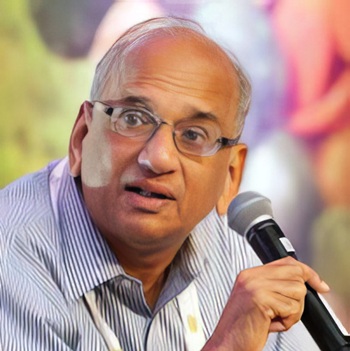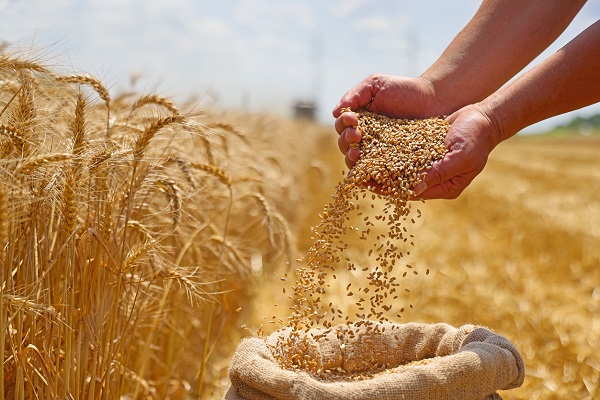.png)

Chandrashekhar is an economist, journalist and policy commentator renowned for his expertise in agriculture, commodity markets and economic policy.
October 2, 2025 at 11:48 AM IST
The government has raised the minimum support price of wheat to ₹2,585 a quintal for the 2025-26 crop. That is ₹160 higher than last year and, by official reckoning, gives farmers more than double the cost of production, which is ₹1,239 a quintal. On the surface, the grower appears well rewarded.
The government claims this includes all paid out costs such as hired human labour, bullock or machine labour, rent for leased land, material inputs, irrigation charges, depreciation, interest on working capital, energy, and the imputed value of family labour. For the grower, the expected margin over the pan-India weighted average cost of production is 109%.
But price support is the easy part. Hiking MSP has become the default reflex of policymakers. It is a blunt instrument, politically useful but strategically shallow. Wheat, India’s second most important cereal after rice, is not faltering because the price is too low. Its problems run deeper, and MSP cannot fix them.
Crop Crunch
The government claims it has bred heat-tolerant varieties. Perhaps. But where is the evidence? If these seeds truly work, the data should be in the public domain. Farmers, researchers and the market deserve proof, not proclamations.
Meanwhile, wheat acreage has hit a plateau of 31 to 33 million hectares for years now. Land is scarce. Expansion is unlikely. We must either find new regions better suited to wheat or accept that output growth depends solely on higher productivity.
And then there is the ecological trap in Punjab and Haryana. The rice-wheat cycle—aka high-input grain monocropping—has exhausted soils and drained aquifers. An ecological disaster is waiting to happen. These two states, which between them account for nearly six million hectares of wheat, cannot escape the need for crop rotation. Legumes, oilseeds, anything would offer some respite instead of this relentless grain monoculture.
Then there is the yield gap. India’s national average yield of 3.5 tonnes per hectare hides sharp disparities. Haryana produces 4.5 tonnes, Punjab 4.2. Uttar Pradesh, with the largest wheat area of 10 million hectares, is stuck at 3.6 tonnes. Madhya Pradesh manages 3.4 tonnes with 7 million hectares. Bihar yields 2.6 tonnes.
There is no mystery about the remedy. India knows what to do: better seeds, smarter irrigation, real extension support. The gaps are glaring. China gets 5.8 tonnes a hectare, the European Union 5.5, Ukraine 4.6. It’s high time India catches up.
It is misleading to take comfort from the US (3.3 tonnes) or Australia (3.2 tonnes). Their wheat is grown in semi-arid zones where land use, not yield, is the priority. India does not enjoy that luxury. Yield improvement is not optional; it is the only path forward.
The market distortion is just as troubling. In Punjab and Haryana, the Food Corporation of India is effectively the sole buyer. Its open-ended procurement buys far beyond national food security needs. This suppresses private participation and entrenches dependence on the state.
Farmers have grown complacent. Higher MSP and assured procurement have come to be seen as entitlements, even rights. This is unsustainable. It prevents Indian wheat from becoming competitive and ties the crop’s fortunes to the exchequer’s indulgence.
Worse, official production estimates inspire little confidence. Government numbers show output rising year after year: 117.5 million tonnes in 2024-25, up from 113.3 in 2023-24 and 110.3 in 2022-23. Yet procurement often misses targets, stocks remain tight, and exports stay banned. Private estimates, consistently 5-10% lower, may well be closer to the truth. If harvests were truly as bountiful as claimed, then there would have been no reason for wheat prices to rise, or for stock limits for the private sector and for a continued ban on exports.
Hard Choices
This is not inevitable. A coherent, long-term wheat policy is possible. It must balance grower, consumer, and processor interests while forcing the tough choices: diversify crops in Punjab and Haryana, push yields in UP and MP, release reliable data, encourage private participation. And above all, stop pretending that MSP hikes are enough.
Price is the least of wheat’s problems. The real rescue requires political will.




